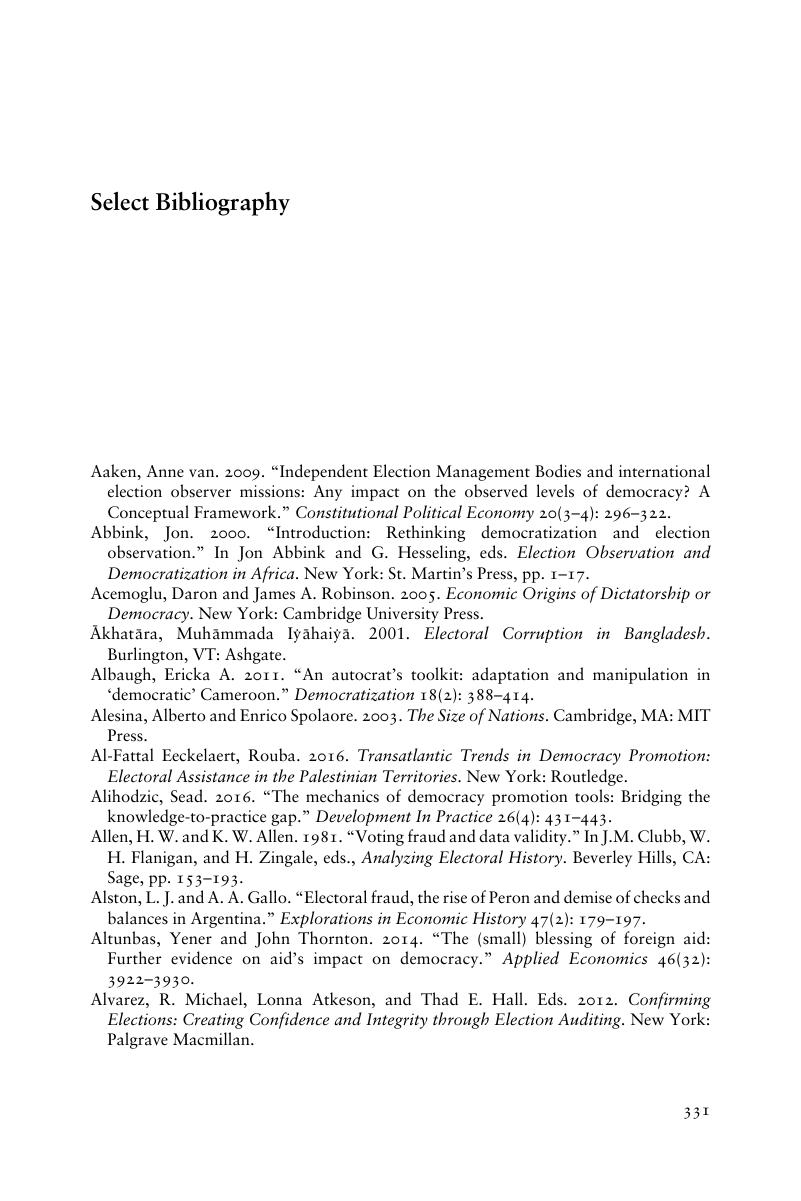Book contents
- Strengthening Electoral Integrity
- Also by Pippa Norris from Cambridge University Press
- Strengthening Electoral Integrity
- Copyright page
- Contents
- Figures
- Tables
- Preface and Acknowledgments
- Part I Introduction: Does Electoral Assistance Work?
- Part II Evaluating Electoral Assistance
- Part III The Strengths and Weaknesses of Electoral Assistance Programs
- Part IV Conclusions: Lessons Learned
- Technical Appendices
- Notes
- Select Bibliography
- Index
- References
Select Bibliography
Published online by Cambridge University Press: 29 September 2017
- Strengthening Electoral Integrity
- Also by Pippa Norris from Cambridge University Press
- Strengthening Electoral Integrity
- Copyright page
- Contents
- Figures
- Tables
- Preface and Acknowledgments
- Part I Introduction: Does Electoral Assistance Work?
- Part II Evaluating Electoral Assistance
- Part III The Strengths and Weaknesses of Electoral Assistance Programs
- Part IV Conclusions: Lessons Learned
- Technical Appendices
- Notes
- Select Bibliography
- Index
- References
Summary

- Type
- Chapter
- Information
- Strengthening Electoral Integrity , pp. 282 - 330Publisher: Cambridge University PressPrint publication year: 2017



